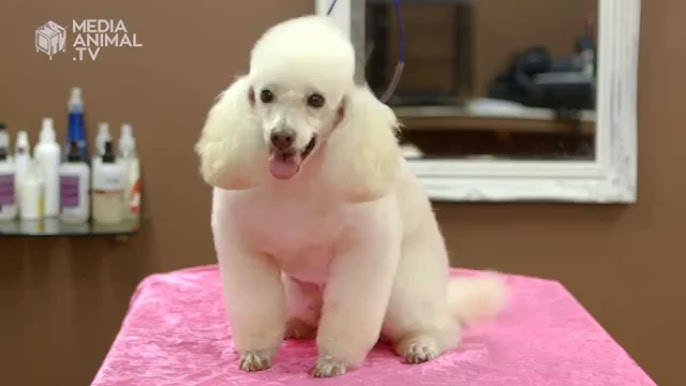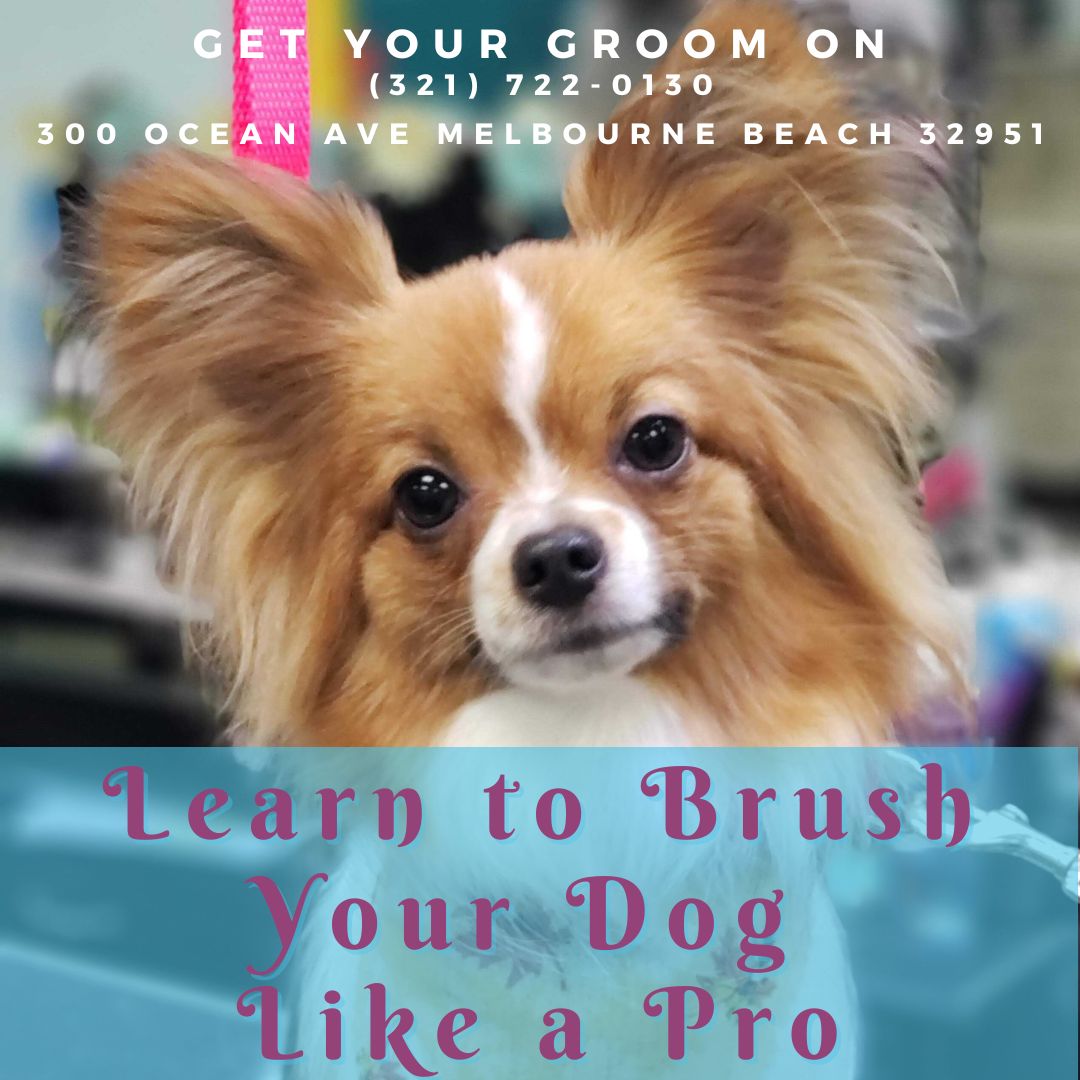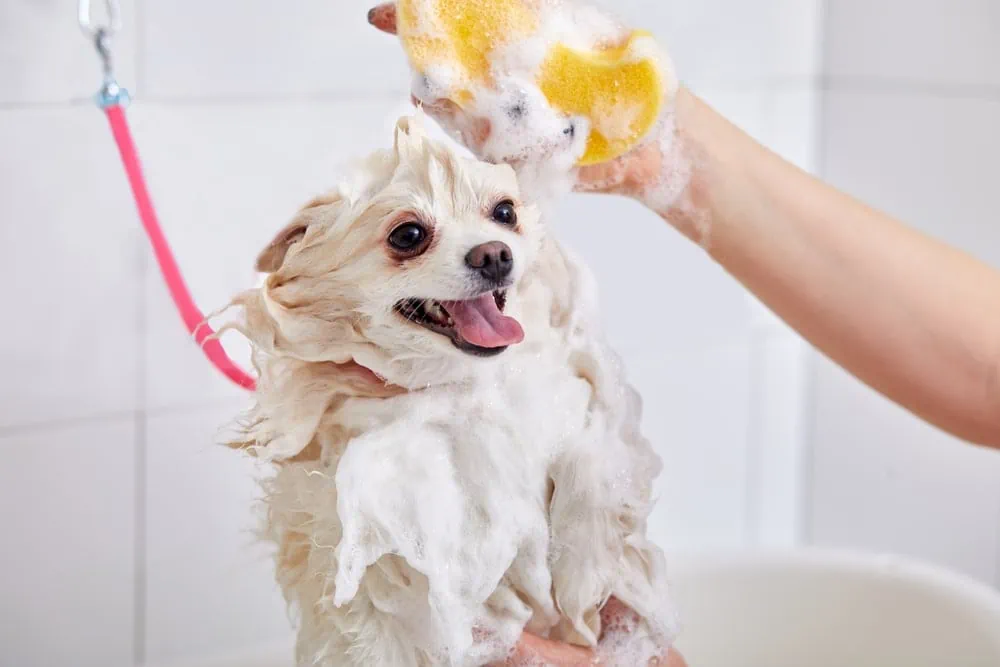Have you ever wondered how some people manage to keep their fluffy dogs looking absolutely fabulous while yours seems to resemble a walking mop? Grooming a fluffy dog can be a daunting task, but with the right approach and tools, you can transform your furry friend into the star of the dog park. This guide will walk you through the steps to groom your fluffy dog like a pro.

Understanding Your Dog’s Fur
Before diving into the actual grooming process, it’s essential to understand your dog’s fur type. Different breeds have different grooming needs, and knowing these can help you tailor your grooming routine to your pet’s specific requirements.
Types of Fur
- Short fur: Breeds like Beagles and Dachshunds fall into this category. Their grooming needs are minimal but still require regular attention.
- Medium fur: Breeds like Border Collies and Labrador Retrievers have medium-length fur that requires more frequent brushing to prevent tangles and mats.
- Long fur: Breeds like Shih Tzus and Afghan Hounds have long, luxurious fur that demands regular grooming to keep it looking its best.
- Curly fur: Poodles and Bichon Frises have curly fur that can be prone to matting if not properly maintained.
Why Understanding Fur Type Matters
Understanding your dog’s fur type helps you choose the appropriate tools and techniques for grooming. For instance, a slicker brush works wonders on long-haired breeds but might not be necessary for short-haired dogs. Knowing this saves you time, effort, and potential frustration.
Essential Grooming Tools
Equipping yourself with the right tools is half the battle. With an array of grooming tools available, selecting the essentials can be overwhelming. Here’s a breakdown to simplify your shopping list.
Brushes
Selecting the proper brush is crucial for effective grooming. Here are some types:
| Type of Brush | Suitable For | Purpose |
|---|---|---|
| Slicker Brush | Long, Curly, Medium Fur | Removes mats and tangles |
| Bristle Brush | Short Fur | Adds shine, removes loose hair |
| Pin Brush | Long, Medium Fur | Gentle on fur, removes loose hair |
| Undercoat Rake | Double-coated Breeds | Removes dead undercoat |
Combs
- Flea combs: Useful for identifying and removing fleas.
- Mat combs: Designed to tackle stubborn mats and tangles.
Clippers and Scissors
Investing in good quality clippers and scissors is essential for trimming your dog’s fur. Clipper blades come in different sizes, so determine which one suits your dog’s fur type best.
Nail Clippers
Trim your dog’s nails regularly to prevent discomfort and injury. There are guillotine-style and scissor-style clippers, and some prefer grinders. Find what works best for you and your dog.
Ear and Eye Cleaning Supplies
Specialized wipes and solutions can help keep your dog’s ears and eyes clean, reducing the risk of infections.
The Basic Grooming Routine
Once you’ve gathered all necessary tools, developing a consistent grooming routine is essential. Consistency not only keeps your dog looking sharp but also helps them become more comfortable with the process.
Step-by-Step Guide
- Brushing: Start by brushing your dog to remove loose fur and detangle any knots. Remember to brush gently and consistently, focusing on one section at a time.
- Bathing: Use a dog-specific shampoo to avoid skin irritation. Wet your dog thoroughly, lather up with shampoo, and rinse well. Avoid getting water in their ears and eyes.
- Drying: Towel dry first to remove excess water, then use a hairdryer on a low setting if your dog tolerates it. Remember to brush while drying to prevent new tangles from forming.
- Nail Trimming: Trim your dog’s nails carefully, avoiding the quick—the sensitive part inside the nail. If you’re unsure, you can always do a little bit at a time.
- Ear Cleaning: Use a specialized ear cleaner and a cotton ball to gently clean your dog’s ears. Avoid using cotton swabs as they can damage the ear canal.
- Eye Cleaning: Use specialized eye wipes or a damp cloth to clean around your dog’s eyes, removing tear stains and debris.
Professional Grooming: When to Consider It
Sometimes, despite your best efforts, your fluffy friend might require professional grooming. Knowing when to seek professional help can save both of you from undue stress.
Signs Your Dog Needs a Groomer
- Severe Matting: If your dog’s fur has matted severely, it’s best to leave it to the pros. Trying to remove mats yourself can be painful for your dog.
- Skin Problems: If you notice rashes, redness, or other skin issues, a professional groomer can provide a more thorough cleaning and spot potential problems.
- Behavioral Issues: If your dog seriously resists grooming, a professional might have the necessary skills to handle them safely.
Choosing the Right Groomer
Research and word-of-mouth recommendations can help you find a groomer who is experienced with your dog’s breed and fur type. Visit the grooming salon to check the cleanliness and ask about their procedures and experience.

Grooming Specific Breeds
Let’s dive deeper into the grooming needs of some common fluffy breeds. Each breed has unique requirements, and knowing these can make the grooming process smoother.
Pomeranians
Pomeranians boast a fluffy double coat that requires regular grooming.
- Brushing: Daily brushing is essential to prevent tangles and mats.
- Bathing: Bathe monthly or as needed, ensuring thorough rinsing to remove all shampoo.
- Trimming: Trim around their feet and hygiene areas to keep them tidy.
Shih Tzus
Shih Tzus have long, flowing fur that can be high maintenance.
- Brushing: Daily brushing to keep their fur smooth and tangle-free.
- Bathing: Bathe every 3-4 weeks, using a gentle dog shampoo.
- Trimming: Regular trimming of facial fur to keep their vision clear; monthly trimming for overall neatness.
Poodles
Poodles are known for their dense, curly fur.
- Brushing: Brush several times a week to prevent mats.
- Bathing: Bathe every month using a conditioner to keep their fur soft.
- Trimming: Regular professional grooming is often needed, especially for elaborate cuts.
Golden Retrievers
Golden Retrievers have a dense double coat that requires regular maintenance.
- Brushing: Brush several times a week to manage shedding and prevent mats.
- Bathing: Bathe every 4-6 weeks, ensuring you remove all shampoo and conditioner.
- Trimming: Trim the feathers on their legs, tails, and belly regularly to keep them neat.
Addressing Common Grooming Challenges
Even seasoned dog owners face grooming challenges. Here’s how to tackle some common issues like a pro.
Dealing with Matting
Mats can be painful and lead to skin problems if left untreated. Regular brushing can prevent mats, but if you encounter one…
- Use a detangler spray: Apply a detangling spray to soften the mat.
- Break it down: Use your fingers to gently break down the mat into smaller sections.
- Use a mat comb: Carefully work the mat comb through the sections, starting at the tips and working your way towards the skin.
Handling Shedding
Shedding is a natural process but can be excessive at times.
- Regular brushing: Frequent brushing can help manage shedding by removing loose fur.
- Healthy diet: Feeding your dog a balanced diet can improve fur health and reduce shedding.
- Vet visits: If shedding seems excessive, consult your vet to rule out underlying health issues.
Bath-Time Blues
Some dogs dread bath time, turning it into a stressful event for both of you.
- Create a calm environment: Use a non-slip mat, and have all your supplies ready.
- Use treats and praise: Reward your dog with treats and positive reinforcement throughout the process.
- Desensitize gradually: Let your dog get used to the bathroom and bathing tools gradually. Start with short, positive experiences and build up.

Keeping Your Dog Calm
Grooming should be a positive experience for your dog. Keeping them calm can make the process smoother and more enjoyable.
Before You Begin
- Exercise first: A tired dog is more likely to sit still during grooming.
- Create a routine: Consistency can help your dog know what to expect.
- Choose the right time: Pick a time when your dog is naturally calm, maybe after a long walk or meal.
During Grooming
- Stay calm: Your dog can sense your emotions. Stay calm and patient.
- Talk to your dog: Use a soothing voice and reassure them throughout the process.
- Take breaks: If your dog gets stressed, take breaks to let them relax.
Recognizing When to Seek Veterinary Help
Sometimes, grooming can reveal underlying health issues that need professional attention.
Signs to Watch For
- Skin issues: Redness, rashes, or scabs can indicate allergies or infections.
- Ear problems: Excessive scratching or a foul odor from the ears may signal an infection.
- Eye issues: Watery or cloudy eyes can indicate health problems.
When in Doubt
If you’re ever unsure about something you find while grooming, always err on the side of caution and consult with your vet. Early intervention can prevent minor issues from becoming major problems.

Maintaining a Regular Grooming Schedule
A consistent schedule keeps your dog looking their best and allows you to catch potential health issues early.
Weekly Tasks
- Brushing: Depending on your dog’s fur type, brush daily or several times a week.
- Nail check: Inspect their nails and trim if necessary.
- Teeth brushing: Brush your dog’s teeth regularly to prevent dental issues.
Monthly Tasks
- Bathing: Bathe your dog monthly or as needed, depending on their activity level and coat type.
- Ear cleaning: Clean your dog’s ears monthly to prevent infections.
Seasonal Tasks
- Fur trimming: Plan professional grooming sessions or more intensive trims, especially during seasonal shedding periods.
- Flea and tick check: Perform thorough checks and apply preventive treatments as necessary.
Conclusion
Grooming your fluffy dog might seem overwhelming, but it can become a bonding experience for both of you once you get the hang of it. With the right tools, techniques, and a bit of patience, you can keep your furry friend looking and feeling like a million bucks. By understanding their specific grooming needs, maintaining a regular schedule, and knowing when to seek professional help, you’ll have your fluffy dog strutting around like the star they are. So grab that brush, a handful of treats, and get ready to groom your fluffy dog like a pro!

